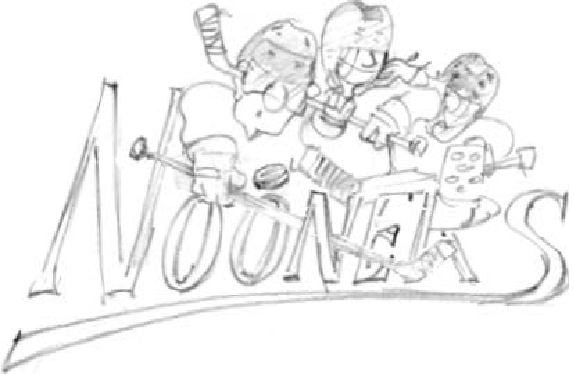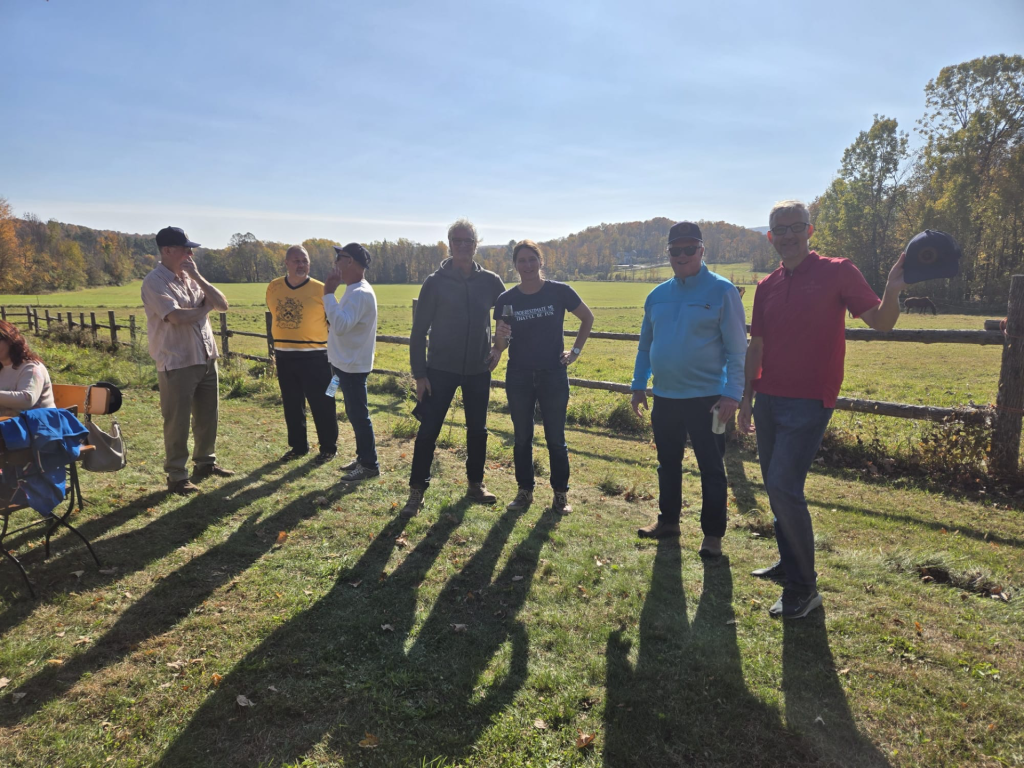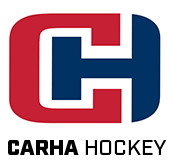CARHA Hockey recently had the pleasure of chatting with several members from Nooner’s Hockey. We held a Q&A session with Allan Cracower and Mark Froimovitch, learned about the early days from Warren Majors, and spoke with current organizer Tim Lukkarila about why Nooner’s Hockey joined the CARHA Hockey family.
“In the autumn of 1974, a thin man I knew vaguely walked past my office on Promenade du Portage carrying a small gym bag and a hockey stick,” said Warren Majors, a long-time member of Nooner’s Hockey. “‘A dozen of us have rented the Guertin on Tuesdays at noon for shinny. You should join us,’ he said. Now, Al Prien weighs 96 pounds soaking wet and wears bookish glasses, so I figured if he could play, so could I. It was strictly sticks in the middle. We took turns playing goalie. Over time, people came and went. We added helmets, goalies, padding, and positions.”
“So, I’ve had a good, long run, and 50 continuous years would have been an impossible dream without the support, encouragement, and affection of countless teammates.”

Current organizer Tim Lukkarila shared some reasons why Nooner’s Hockey chose CARHA Hockey:
1. $25.00 per year made it affordable for the players.
2. You can play in up to five leagues covered by CARHA with one payment. Nooner’s plays three times a week at different arenas, but that counts as one league.
3. CARHA makes it easy to file claims, and they pay out on those claims.
4. Some of our players are self-employed or retired and may have limited or no insurance that covers them on the ice.
5. CARHA has a great support team for players and organizers.

We also caught up with long-time members Allan Cracower and Mark Froimovitch, who shared more about their experiences with Nooner’s Hockey and CARHA.
CH: Allan, you’ve been with Nooner’s Hockey since its inception. What can you tell us about your experience from the beginning to now?
AC: Not long after starting my career, I realized I needed a diversion to offset the seriousness of my work. Although I hadn’t played hockey in 12 years, I thought hockey might be the answer. A colleague suggested I get in touch with someone in Hull who was looking for players. Almost 50 years later, I am the sole survivor of the original group. Interestingly, we continue to play in the same arenas, on the same days, and at the same times.
Our group is diverse. Some of us live in the city, others in rural areas. We have Francophones, Anglophones, males, females, different cultures and religions. Some are elite players; others are relatively new to hockey. Ages range from 14 to 81, with players from all sorts of professions, including truck drivers, doctors, lawyers, and public servants.
CH: Mark, how were you convinced to join Nooner’s Hockey, and what was your first experience like?
MF: Warren Majors convinced me to try hockey when I met him at his sheep farm. I had never played on artificial ice or with equipment, but the guys were very understanding and happy to have another body. I’ll always be grateful to Warren for asking me to play.
CH: Allan, you’ve dedicated decades to playing rec hockey. What keeps you motivated, and what makes Nooner’s Hockey special to you?
AC: Leadership—maybe? In almost 50 years, only three of us have been at the helm. Common values and interests, too. What’s certain is that we all love sports, particularly hockey, and we all come out to have a good time.
One reason for our success is that we play at noon. This worked for me, as I had a young family, and my wife was teaching night courses at the University of Ottawa. It allowed me to balance family obligations while playing hockey. Perhaps this schedule suits others, too.
CH: Mark, how have you seen Nooner’s Hockey and rec hockey in general evolve over the years?
MF: It has evolved a lot. When I started organizing, we played once a week. Now, Tim runs it, and it’s grown to three days a week. Players know their teams, what color to wear, and we even have spares on the bench. The younger players are faster, but everyone is still courteous and inclusive toward the older, slower players.
CH: Allan and Mark, what do you enjoy most about being members of CARHA Hockey, and how has it enhanced your experience as recreational players?
MF: It’s been very positive. The staff is friendly and easy to deal with. I had a shoulder injury, and CARHA helped with physio. Several other players were also happy with their experiences. Having insurance is a relief, and it’s affordable.
AC: What I do know is positive. No one wants to be injured on the ice, but it’s reassuring to know that if it happens, you’re protected financially. I’ve heard nothing but good things from those in our group who have submitted claims to CARHA.
CH: Mark, how did you balance your veterinary work with hockey, especially when you were on farm calls?
MF: I was always the last to arrive and the first to leave. I’d be far away on farm calls in places like Kazabazua or Gracefield, trying to change while driving! Luckily, I never got stopped by the police.
CH: Allan, as Nooner’s Hockey approaches its 50th season, what advice would you give to younger players just starting out in recreational hockey?
AC: Competitive young players will bring lots of energy and a desire to win. That’s great but having fun should be the priority. Building good relationships on and off the ice, showing respect to everyone involved in the game—that’s what will make hockey enjoyable. Winning and having fun aren’t incompatible.
CH: Allan, looking back at all the years you’ve played, what changes have you noticed in the game or your own playing style as you’ve gotten older?
AC: The game itself hasn’t changed much, but the quality has improved. Players’ skills, team plays, equipment, and the game’s popularity have all reached new heights. Today, young people must be exceptionally skilled and dedicated to succeeding. Natural talent alone isn’t enough anymore.
One notable change is the growth of girls’ and women’s hockey. We’ve had a female goalie who occasionally played with us, went on to play university hockey, and is now playing professionally.
CH: Allan, as Nooner’s Hockey celebrates its 50th season, what are you most proud of when you reflect on the team’s legacy and your own experience?
AC: Memories! After the age of 50, I was often the oldest on the ice. I remember one game when I was 52—right before Christmas—I scored six goals. During the holidays, I seriously considered hanging up my skates. I thought, “I’m old, and this would be a memorable way to end my playing days.” Thankfully, I didn’t quit. Now, at 81, when people ask if I’m still playing, I tell them, “The good news is I’m still playing; the bad news is how I’m playing.” But the truth is, the people I play with are not only great players—they’re wonderful people. They keep me motivated.
For older players, my advice is this: Play with younger players at or near your level. They’re more positive, energetic, and optimistic, and being around them can connect you to the present and future. They’ll energize you and enrich your experience. While aging means physical decline, it doesn’t mean you should quit. After all, the less you do, the less you’re capable of doing. Don’t surrender—hockey is for all ages and levels.
